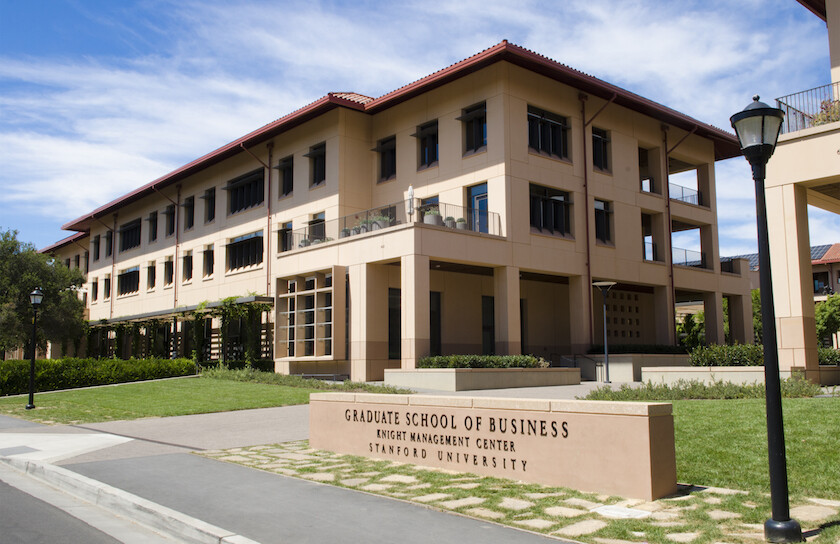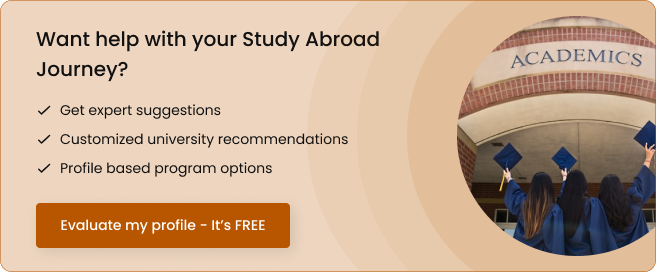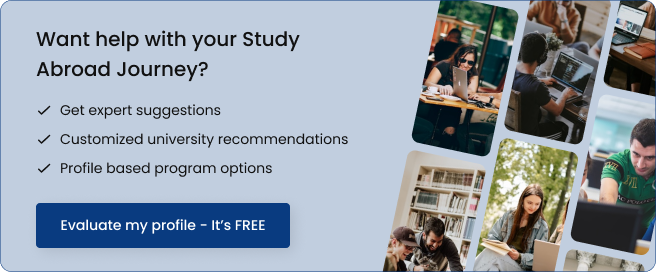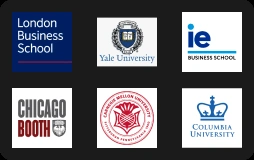
Deferred MBA Programs
Deferred MBA: Everything You Need to KnowDeferred MBA programs are becoming increasingly p…
Table of Contents

When you think of top business schools globally, Stanford Graduate School of Business (GSB) is always at the top of the list. Known for its world-class faculty, innovative curriculum, and entrepreneurial mindset, Stanford MBA consistently ranks as one of the most prestigious MBA programs in the world. But what makes it so special, and is it the right fit for you?
Choosing an MBA program is a significant decision that can shape your career, personal growth, and even the trajectory of your life. Whether you're aiming for leadership roles, launching a startup, or switching careers, the Stanford MBA offers unparalleled opportunities to achieve those goals.
In this blog, we'll dive into everything you need to know about Stanford's MBA program—from the cost and admission requirements to job placements and the application process. Let’s get started!
The Stanford MBA program is designed to provide a comprehensive education that prepares students to be innovative leaders in the business world. Known for its rigorous curriculum and focus on leadership, the program offers a blend of academic theory and real-world practice.
The Stanford MBA is a full-time, two-year program that follows a structured academic calendar. Here’s a breakdown of the key details:
Program Feature | Details |
| Program Duration | 2 years (full-time) |
| Academic Terms | 4 quarters per year |
| Schedule | Monday to Thursday for classes; Fridays reserved for optional activities, guest speakers, and career events |
| Core Curriculum (Year 1) | Accounting, Finance, Strategy, Operations, and more |
| Electives (Year 2) | Entrepreneurship, Finance, Social Impact, and other customizable options |
In the first year, students focus on core business areas to build a solid foundation. The second year is all about customization through electives that align with your career goals. Here's an overview of the academic progression:
Stanford GSB is known for its holistic approach that goes beyond classroom learning. The program incorporates leadership development, global perspectives, and hands-on experiences to enhance both professional and personal growth.
Key Features of Stanford's Holistic Approach:

Stanford Graduate School of Business prides itself on a diverse and inclusive MBA class. The school attracts students from various professional backgrounds, cultures, and regions, all contributing to a rich learning environment. The class profile provides a snapshot of the unique makeup of each cohort, reflecting Stanford’s global reach and commitment to diversity.
Class Feature | Details |
| Class Size | ~424 students |
| Percentage of International Students | ~44% |
| Countries Represented | 66+ |
| Female Representation | ~44% |
| US Minority Representation | ~36% |
| Average Age | 28 years |
| Work Experience (Average) | 4-5 years |
Stanford GSB is committed to bringing together students from diverse industries such as technology, finance, healthcare, non-profits, and more. This diversity in professional backgrounds ensures that students can learn from different perspectives and leverage a wide range of experiences during discussions and team projects.
When it comes to academic achievement and standardized test scores, Stanford attracts top-tier applicants. Here’s a quick look at the academic profile of the current MBA class:
Academic Metric | Details |
| Average GMAT Score | 737 |
| GMAT Range (Middle 80%) | 700–770 |
| Average GRE (Quant) | 164 |
| Average GRE (Verbal) | 163 |
| Undergraduate GPA (Average) | 3.76 |
| Undergraduate Majors | Varied (Engineering, Economics, Social Sciences, Humanities, etc.) |
The academic profile demonstrates the high standards of the Stanford MBA program. However, Stanford evaluates candidates holistically, focusing not only on test scores and GPA but also on leadership potential, impact, and personal qualities.
One of the core pillars of the Stanford MBA program is its strong emphasis on leadership development. Stanford believes that leadership isn’t just taught in a classroom—it’s developed through hands-on experience, self-reflection, and personal growth.
Stanford's MBA students are constantly placed in situations that challenge their leadership skills. Whether through group projects, case studies, or the school’s famous Leadership Labs (LEAD Labs), students get opportunities to lead real teams, make decisions under pressure, and reflect on their performance.
Key elements of Stanford’s leadership focus include:
Stanford’s goal is to not only prepare students to lead in the business world but also to develop them as socially aware, emotionally intelligent leaders capable of making a significant impact.
Stanford MBA is one of the most selective business programs in the world. With thousands of applicants vying for a limited number of spots, getting admitted requires more than just impressive test scores and work experience.
Admissions Statistic | Details |
| Acceptance Rate | ~6% |
| Applications Received | ~7,000+ |
| Seats Available | ~424 |
This low acceptance rate reflects Stanford’s rigorous selection process, making it one of the toughest MBA programs to gain entry to. It’s not just about numbers; Stanford looks for individuals who stand out through their leadership potential, intellectual vitality, and personal qualities.
Stanford’s admissions process is known for its holistic approach, which goes beyond just evaluating academic and professional achievements. Here are some unique aspects:
When reviewing applications, Stanford’s admissions committee focuses on a few core elements. Here’s a breakdown of the key factors:
Admissions Criteria | Details |
| Academic Excellence | High GMAT/GRE scores and a strong undergraduate GPA (though not the sole deciding factor) |
| Leadership Potential | Demonstrated leadership ability, whether in professional, community, or personal settings |
| Work Experience | 4-5 years of experience on average, with a focus on impact and progression |
| Essays | Personal and reflective essays that showcase your values, life journey, and aspirations |
| Letters of Recommendation | Strong endorsements from those who can speak to your leadership and teamwork abilities |
| Diversity of Thought and Background | Stanford values students from different industries, cultures, and perspectives |
| Personal Qualities | Intellectual curiosity, resilience, self-awareness, and a desire to contribute to society |
Stanford’s admissions process is deeply personal. They want students who are not only academically and professionally accomplished but also introspective, emotionally intelligent, and driven by a purpose.
Stanford Graduate School of Business consistently ranks as one of the top MBA programs globally. Its reputation for excellence, leadership development, and innovation make it a preferred choice for aspiring business leaders. Across the most influential rankings, Stanford GSB remains at the forefront, proving its value on the global stage.
Stanford GSB regularly ranks in the top three spots across the most respected business school rankings, including Financial Times, QS, Bloomberg Businessweek, and Forbes. Here’s an overview of its rankings:
Ranking Platform | Stanford GSB Rank |
| Financial Times (2024) | #1 |
| QS Global MBA Rankings (2024) | #1 |
| Bloomberg Businessweek (2024) | #2 |
| Forbes (2024) | #1 |
| U.S. News & World Report (2024) | #1 |
Stanford GSB’s stellar performance in rankings can be attributed to several key factors:
Stanford MBA is frequently compared with other prestigious programs like Harvard Business School, Wharton, and MIT Sloan. Here’s a comparison of key metrics among the top MBA programs:
Business School | Rank (FT 2024) | Average GMAT | Average Salary (Post-MBA) | Entrepreneurship Focus | Global Recognition |
| Stanford GSB | #1 | 737 | $231,849 | Very High | Excellent |
| Harvard Business School | #3 | 730 | $217,882 | High | Excellent |
| Wharton (UPenn) | #2 | 732 | $211,543 | Medium | Excellent |
| MIT Sloan | #5 | 728 | $198,069 | High | Very Good |
While Harvard, Wharton, and MIT Sloan also rank highly, Stanford stands out for its smaller class size, higher average post-MBA salaries, and stronger emphasis on entrepreneurship. Its close ties to Silicon Valley give it a unique edge, especially for students interested in technology and startups.
Stanford GSB's MBA program is known for its balance between foundational business education and flexibility to pursue individual interests. The curriculum is designed to develop well-rounded leaders through a combination of core courses, experiential learning, and electives.
During the first year, students complete a series of core courses designed to provide a solid foundation in essential business disciplines. These core courses help students understand fundamental business principles and develop critical problem-solving skills.
Core Courses | Topics Covered |
| Financial Accounting | Understanding financial statements, business performance |
| Finance | Investment strategies, financial markets, capital structure |
| Managerial Economics | Market analysis, pricing strategies, decision-making |
| Organizational Behavior | Leadership, teamwork, organizational dynamics |
| Strategic Leadership | Corporate strategy, decision-making, leadership frameworks |
In addition to the core curriculum, Stanford emphasizes leadership development, with its Leadership Labs providing students with hands-on experience in team-based leadership challenges.
The second year of the MBA program offers students the flexibility to specialize in areas that align with their career aspirations. Students can choose from a wide range of electives, creating a personalized learning path based on their interests and goals.
Some popular focus areas include:
Elective Focus Area | Key Electives |
| Entrepreneurship | Startup Garage, New Venture Formation |
| Social Innovation | Designing for Impact, Public Policy and Social Change |
| Finance | Corporate Finance, Private Equity, Financial Modelling |
| Technology & Innovation | Product Launch, Technology Strategy |
Stanford’s unique environment fosters entrepreneurial thinking, with courses designed to help students launch ventures while still in school.
Stanford GSB offers numerous global opportunities that allow students to broaden their horizons and gain a global perspective on business:
These opportunities help students develop the global mindset needed for leadership in today’s interconnected world.
The cost of an MBA at Stanford is a significant investment, but the school offers financial aid options to ensure that qualified students can afford the program. Here’s a breakdown of the total costs and available financial aid.
Expense | Estimated Annual Cost (2024) |
| Tuition | $79,860 |
| Living Expenses | $34,806 (housing, food, personal) |
| Books & Supplies | $1,671 |
| Health Insurance | $6,768 |
| Transportation | $1,224 |
| Other Personal Expenses | $4,680 |
| Total (Annual) | $129,009 |
The total cost of attendance for the two-year MBA program is approximately $258,000, including tuition, living expenses, and additional costs.
Stanford GSB offers both need-based and merit-based financial aid. Approximately 50% of students receive financial aid, and the school encourages all applicants to apply for assistance regardless of their financial background.
International students can access need-based financial aid, and there are various loan programs specifically designed for non-U.S. citizens. Additionally, organizations like Prodigy Finance offer student loans without requiring a U.S. co-signer.
Stanford GSB graduates are highly sought after by top employers across industries. The school’s strong emphasis on entrepreneurship and innovation also leads many students to start their own ventures.
Stanford MBA graduates consistently achieve high placement rates and impressive salaries. Here’s a look at the latest employment data:
Metric | Details (2024) |
| Employment Rate (3 months post-grad) | 91% |
| Median Base Salary | $175,000 |
| Median Signing Bonus | $30,000 |
| Top Industries | Technology, Finance, Consulting |
| Top Employers | Google, McKinsey & Company, Goldman Sachs |
Graduates enter a range of industries, with technology (33%), finance (29%), and consulting (20%) being the top three sectors. Stanford’s proximity to Silicon Valley and its entrepreneurial culture make it a leading choice for those looking to enter the tech industry.
One of the biggest advantages of a Stanford MBA is access to its extensive alumni network. With over 30,000 alumni globally, students benefit from a powerful network that spans every major industry.
The alumni network is not just a resource for job opportunities; it also fosters strong personal connections that last throughout a career.

The Stanford MBA application process is rigorous, designed to evaluate candidates holistically. It goes beyond numbers to assess leadership potential, intellectual curiosity, and personal qualities.
Application Element | Details |
| Essays | 2 required essays (personal and career-related) |
| Resume | 1-page professional resume |
| GMAT/GRE Scores | GMAT or GRE required |
| Letters of Recommendation | 2 letters (from supervisors/colleagues) |
| Interview | By invitation only (after initial review) |
The Stanford MBA essays are a vital part of the application. They allow you to reflect on your experiences, aspirations, and personal values. Stanford’s famous essay prompt, “What matters most to you, and why?”, is designed to get applicants thinking deeply about their motivations and goals.
To tackle this essay effectively, follow these tips:
Stanford’s interview is by invitation only, typically extended after the initial review. Here are some tips for success:
With a 6% acceptance rate, standing out in Stanford's competitive applicant pool requires more than great test scores. Stanford seeks applicants who embody intellectual vitality, leadership, and personal qualities.
Quality | Description |
| Intellectual Vitality | Passion for learning, curiosity, and academic excellence |
| Leadership | Demonstrated leadership in professional, personal, or community settings |
| Personal Qualities | Resilience, integrity, self-awareness, and empathy |
Here’s how to differentiate yourself by crafting a strong narrative in your application:
Stanford GSB is often compared with other leading programs such as Harvard Business School, Wharton, and INSEAD. Here's how they stack up:
Business School | Curriculum Focus | Culture | Alumni Network | ROI |
| Stanford GSB | Entrepreneurship, Innovation | Collaborative, entrepreneurial | Tight-knit, strong in tech & startups | High (especially in tech and startups) |
| Harvard Business School | Leadership, General Management | Competitive, large cohort | Extensive, strong in consulting & finance | High (well-rounded) |
| Wharton (UPenn) | Finance, Strategy | Large, finance-focused | Strong in finance and global reach | High (particularly in finance) |
| INSEAD | Global Business, Diversity | International, highly diverse | Strong in global placements | High (particularly for international careers) |
Stanford is a great fit if you're interested in:
Pursuing an MBA at Stanford is a significant financial commitment, but the potential return on investment (ROI) is impressive due to the career outcomes of its graduates.
Expense | Estimated Cost (2 years) |
| Tuition & Fees | $159,720 |
| Living Expenses & Additional Costs | ~$98,000 |
| Total Cost | ~$258,000 |
The ROI can be significant, with average starting salaries around $175,000 plus bonuses, particularly in sectors like technology and consulting. Moreover, the entrepreneurial focus at Stanford means many graduates find success in startups, which can lead to substantial financial returns in the long term.
Stanford MBA graduates typically enjoy rapid career advancement and access to top roles in tech, finance, and consulting. Additionally, the program's strong entrepreneurial ecosystem fosters long-term career success for those looking to build their own ventures.
Several factors distinguish Stanford’s MBA program from other top schools, including its emphasis on leadership, entrepreneurship, and proximity to Silicon Valley.
Stanford’s curriculum places a strong emphasis on:
Being located in the heart of the world’s technology hub gives Stanford MBA students unique access to some of the most innovative companies and startups. Regular interactions with venture capitalists, entrepreneurs, and tech leaders give students an unparalleled opportunity to immerse themselves in the world of innovation.
Stanford GSB emphasizes the development of socially responsible leaders. The school encourages students to think about how they can make a positive impact on society through its Center for Social Innovation and courses like Designing for Impact.
Applying to Stanford’s MBA program requires careful planning and execution. Here’s a suggested timeline to help you prepare for each step of the process, from tests to recommendations, ensuring you stay organized and meet all deadlines.
Timeline (Months before Deadline) | Action |
| 12-14 months before | Begin preparing for the GMAT/GRE. Research Stanford’s application requirements. |
| 10-12 months before | Start brainstorming for your personal essays. Reflect on key experiences and leadership stories. |
| 8-10 months before | Reach out to recommenders and discuss your MBA goals with them. Give them plenty of time to write. |
| 6-8 months before | Take the GMAT/GRE. Continue refining your essays. Begin preparing your resume and LinkedIn profile. |
| 4-6 months before | Finalize your essays and ensure all application components are ready. Submit your test scores. |
| 2-4 months before | Submit your application well ahead of the deadline. Prepare for the interview if invited. |
Early planning is essential, especially when juggling work and personal commitments. Take time to reflect on the values and leadership qualities that Stanford looks for, and craft a story that ties your goals to what Stanford GSB offers.
One of the most valuable resources during your application process is Stanford GSB’s alumni and current students. Conducting informational interviews can give you insights into what the program is really like and how to align your application with Stanford’s values.
Resources and Useful Links
Here are some essential resources to help you through the Stanford MBA application process and beyond.

Stanford Graduate School of Business (GSB) stands out as one of the most prestigious and forward-thinking MBA programs in the world. With its strong emphasis on leadership, innovation, and entrepreneurship, the program offers unparalleled opportunities for personal and professional growth.
Is Stanford GSB the best fit for your career goals and personal aspirations? If you are passionate about making an impact, driving innovation, or pursuing entrepreneurial ventures, Stanford’s resources, faculty, and alumni network are unmatched. However, the decision ultimately depends on aligning your goals with what the program has to offer.
Applying to Stanford GSB is a big step, but with the right preparation and guidance, you can stand out and secure your spot in one of the world’s most prestigious MBA programs. If you need personalized advice, expert feedback on your application, or help navigating the admissions process, MastersBuddy is here to support you every step of the way.
Get in touch with our experienced mentors and admissions experts to increase your chances of success. Whether it’s essay reviews, interview prep, or advice on financing your MBA, we’ve got you covered!
Contact MastersBuddy today and take the next step toward your MBA dream.

